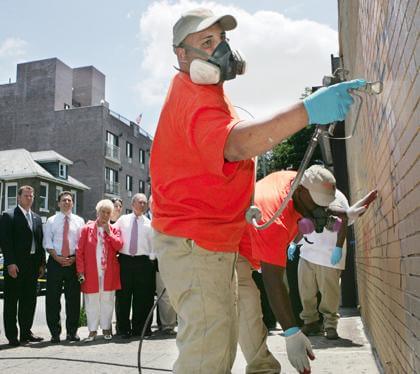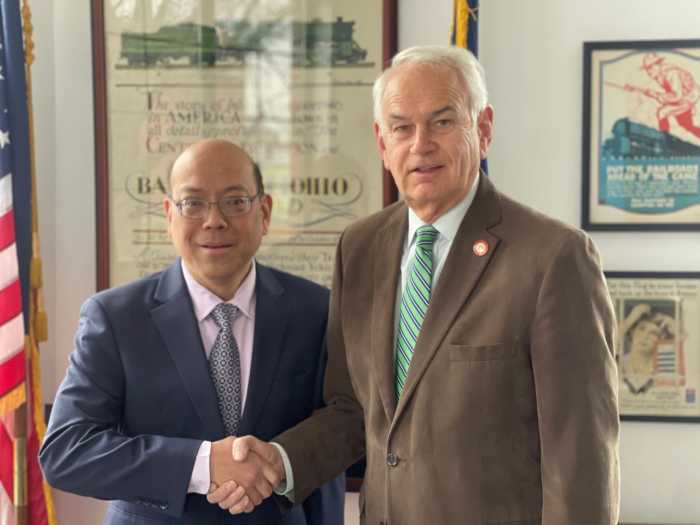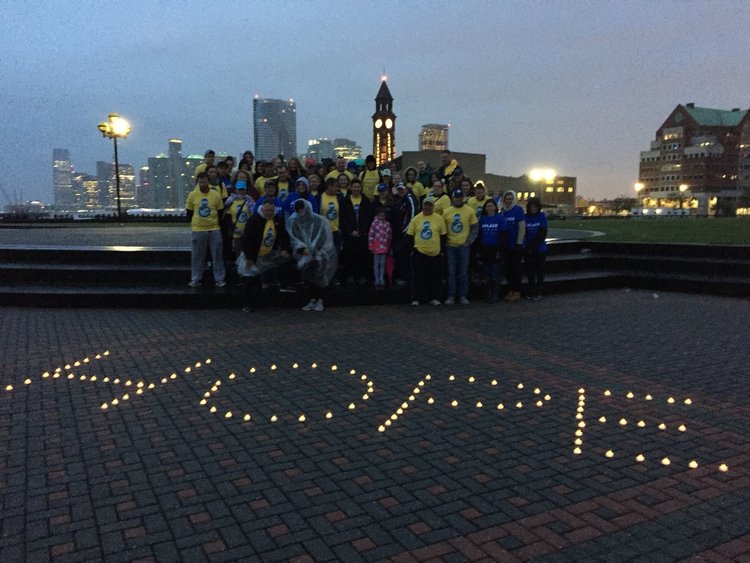By Jeremy Walsh
Mayor Michael Bloomberg came to Queens last week to announce legislation that would make it easier for the city to remove graffiti in neighborhoods and to praise the addition of several new trucks to existing graffiti clean-up fleets.
In order for the city to clean up graffiti on the wall of a private property, the owner now must sign a waiver permitting the city to do the work. Because not everyone returns the waivers, clean-up crews must skip a large percentage of properties.
“If a property owner doesn’t sign a waiver, the entire block suffers,” Bloomberg said at a news conference in Sunnyside.
The new legislation would change the process so property owners would have to waive out of the graffiti cleanup. The move earned praise from three Queens councilmen.
“Nothing makes a good neighborhood look worse than graffiti everywhere,” said City Councilman Eric Gioia (D-Sunnyside), who noted the graffiti problem in Sunnyside has improved since 2001. “Small bad things can create a ripple effect.”
Councilman Peter Vallone (D-Astoria) pointed out the bill would enhance legislation he championed in 2005.
“I like it,” he said. “We should do this more often.”
Councilman Leroy Comrie (D-St. Albans) hailed the benefits of the change for small businesses in his district.
“Once we remove this roadblock for businesses, we will see the numbers triple at least,” he said of the clean-up statistics.
Bloomberg said the city removed graffiti from 3,891 sites during the first six months of 2009, compared with 3,478 sites for the same stretch of 2008. The number would be higher this year, except for a rainy June that kept painting crews off the streets most days.
In addition to the legislation, the city has obtained 10 new power-wash trucks using federal funding and centralized responsibility for graffiti removal with the city Sanitation Department.
“Making the lines of accountability in city government a little more clear will help us get the job done better,” the mayor said.
But the city’s ramp-up of its anti-graffiti efforts comes at the same time private, nonprofit graffiti programs are facing funding hits. The group Woodside on the Move, which pays young people a stipend every summer to paint over the tags in western Queens, is one such agency.
Executive Director Rosa Reyes said the graffiti removal programs currently operate on an $11,000 budget. But city funding in the 2010 fiscal year has been cut in half, she said, leaving in question whether the nonprofit will be able to regularly clean properties after the summer.
But she still praised the mayor’s efforts.
“With the mayor’s program, we’re even getting some free paint and supplies,” she said.
Gary Giordano, district manager of Community Board 5, said $8,000 in city cuts to his office’s funding will be felt primarily in the graffiti removal program, which typically gets between $18,000 and $21,000 a year.
“If the program stopped, I think you would really see a lot more graffiti accumulation,” he said, noting CB 5 is considering holding fund-raisers to make up the money.
Reach reporter Jeremy Walsh by e-mail at jewalsh@cnglocal.com or by phone at 718-229-0300, Ext. 154.

































